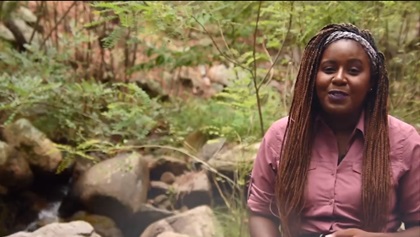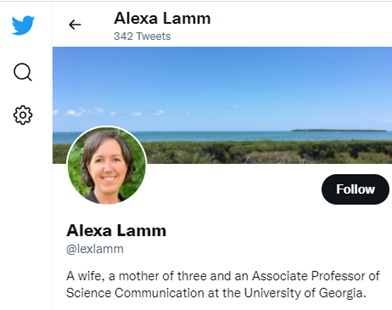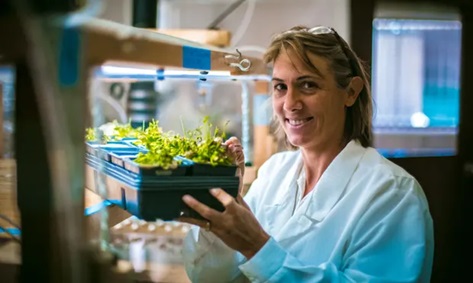Article written by Eli Typhina and Sarah Gregory
The credibility of a scientist often hinges on the perception of their ability to separate from the ‘human’ aspects of themselves. However, embracing some ‘human’ aspects of scientists – such as identities outside of their field of study – may result in unexpected benefits for science and society. These personal identities can include being parents, having disabilities, and their ethnic background. By sharing how their identities fuel the care and passion needed to make key scientific discoveries, scientists can build a new kind of credibility and connection with non-scientists. Personal identities consist of aspects of ourselves that define who we are and how others perceive us, such as one’s identities as a male, a member of Generation Z, an artist, a dyslexic, or a parent (Degges, 2021). In this article, we will offer several ways scientists can share their “human” nature through narratives intertwining their scientific and personal identities.
Narratives offer a common space where non-scientists can connect with the emotional highs and lows inherent at the intersection of a scientist’s personal and professional life (Negrete, 2004). Through shared experiences, non-scientists recognize themselves as belonging to the same identity groups as scientists and, thus, will more likely feel a sense of appreciation, empathy, and trust for the scientist and their work. Additionally, by gearing communications toward a shared identity group, scientists intuitively understand how to tailor their communications for that non-scientist group – because they are a member of this group. Thus, personal struggles and passions provide an invitation for non-scientists to join scientists on a shared journey, an experience that can spark interest and respect for the scientist’s work as seen in the efforts of the following three scientists.
Herpetologist Dr. Earyn McGee references her identity as an African American woman to increase the representation of black women in natural resources careers. On social media, McGee goes by the name @Afro_Herper and sprinkles references to her identity in posts, such as the challenges of being black in science and participating in collaborations on representation, such as this women in science video. She further expands on her identity by sharing stories of her personal life and career journey. Her Instagram feed includes images of her pottery hobby, travels as a successful #scicommer, and past struggles as a student (Figure 1). McGee’s narratives stand as a testament to her authenticity, through posts revealing her excitement for research, her vulnerabilities and challenges, as well as her triumphs.
Figure 1. A clip from McGee’s Instagram (24 Aug 2021) where she shares her research and includes a caption with a personal story about her time as a student, stating, “I can’t lie. It’s weird. I cried. For a very long time, a significant part of me involved being a student…”
Dr. Alexa Lamm (2022), describes herself as “a wife, a mother of three, and an Associate Professor of Science Communication at the University of Georgia” (Figure 2). She first points to her identity as a wife and mother because she believes personal identities – such as being a parent – can help people relate to scientists. She encourages scientists to lean into other aspects of themselves to identify aspects of their research that may have significance to others. Essentially, by speaking about their research from their non-research experiences, such as being a mother, about what their findings mean, they can have a greater impact on groups, such as families, than speaking from their role as a scientist.
Figure 2. A screenshot of Alexa Lamm’s Twitter bio where she introduces herself in her role as a “wife, a mother” before her job as a professor.
Dr. Hope Jahren describes her path into the world of botany and the life she built alongside it in her National Bestseller, Lab Girl (Jahren, 2017). In the book, Jahren combines her experience as a geobiologist with aspects of her identity, such as her struggles becoming a mother and handling mental illness. Journalist Genna Buck (2016) described Jahren’s book as adding “..a rich, emotional dimension to science people can relate to.” Therefore, sharing one’s personal life with their scientific journey results in a humanizing effect that exposes how personal trials can help and/or hinder their career.
Figure 3. An image of Hope Jahren in her laboratory. Photo courtesy of The Guardian.
Scientists, it’s time. Time for us to open the door on the ‘human’ in our closet so that others see us as similar to themselves, rather than as different or separate from the rest of society. It’s time we stop trying to explain our research findings and instead start explaining the personal experiences that enabled us – fueled us – to make these discoveries. Through this open door scientists can make a connection to the public beyond lab coats and test tubes.
Start by looking at the identities you share with non-scientists, such as your demographics (i.e. age, gender, ethnicity, or geographic location), roles (i.e. parent, entrepreneur, teacher, or foreign national), and abilities (i.e. disabled, ADHD, dyslexic, or autistic). Think about who, from your non-science groups, could benefit from your research. Explore organizations that can help you weave your stories together, such as Compass, Helicase Media, and STEMedia. And, look for scientists sharing their personal identities, like the three discussed in this article, on Twitter or YouTube. As Raven Baxter said, “It’s a little scary but it’s never a bad thing to embrace who you are inside” (Ward, 2021).
References
Buck, G. (10 Apr 2016). Lab Girl succeeds as a nonfiction novel. Maclean’s. Retrieved from: https://www.macleans.ca/culture/books/lab-girl-succeeds-as-a-non-fiction-novel/
Degges, S. (15 Oct 2021). Personal and Social Identity: Who Are You Through Others’ Eyes. Psychology Today. Retrieved from: https://www.psychologytoday.com/us/blog/lifetime-connections/202110/personal-and-social-identity-who-are-you-through-others-eyes
Jahren, H. (2017). Lab Girl. Vintage Books: Penguin Random House. https://www.penguinrandomhouse.com/books/248239/lab-girl-by-hope-jahren/
Lamm, A. (24 Mar 2022). Communicating Science to Diverse Audiences: A Roadmap to Informed Decision-Making Associated with Agricultural Innovation. 2022 Mason Pharr Seminar. Horticultural Science Department, North Carolina State University.
Negrete, A. (2004). Learning from education to communicate science as a good story. Endeavor, 28(3), 120–124. https://doi.org/https://doi.org/10.1016/j.endeavour.2004.07.003
Ward, A., & Baxter, R. (16 Feb 2021). Molecular Biology (PROTEINS + SCIENCE COMMUNICATION) with Raven “The Science Maven” Baxter. Alie Ward. Retrieved from: https://www.alieward.com/ologies/molecularbiology
Acknowledgements
We would like to thank the NC State University Office of Undergraduate Research for funding assistance, as well as these science communicators who inspired this article:


